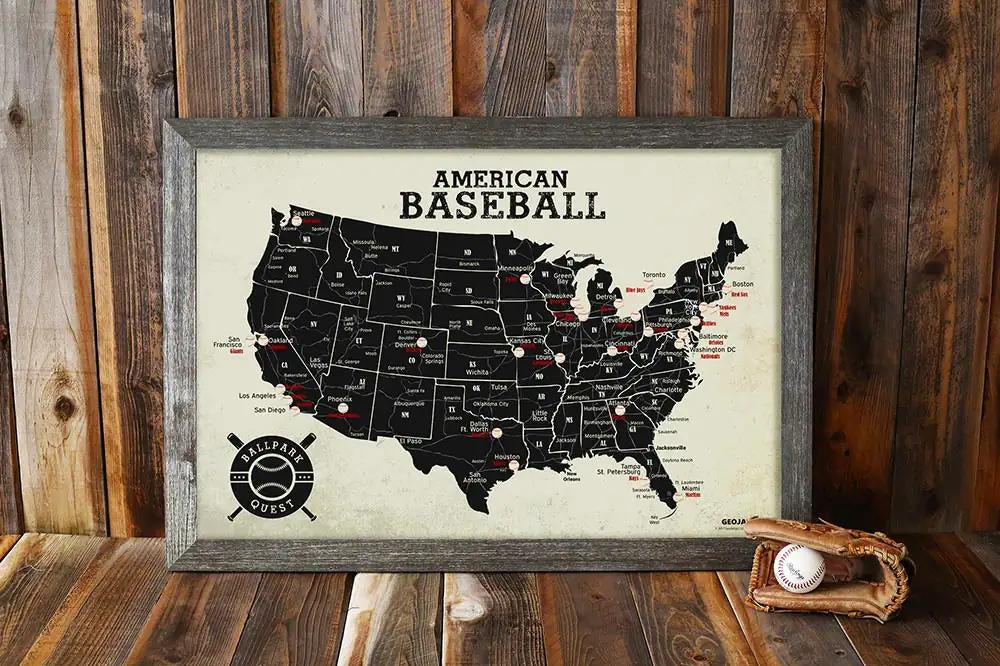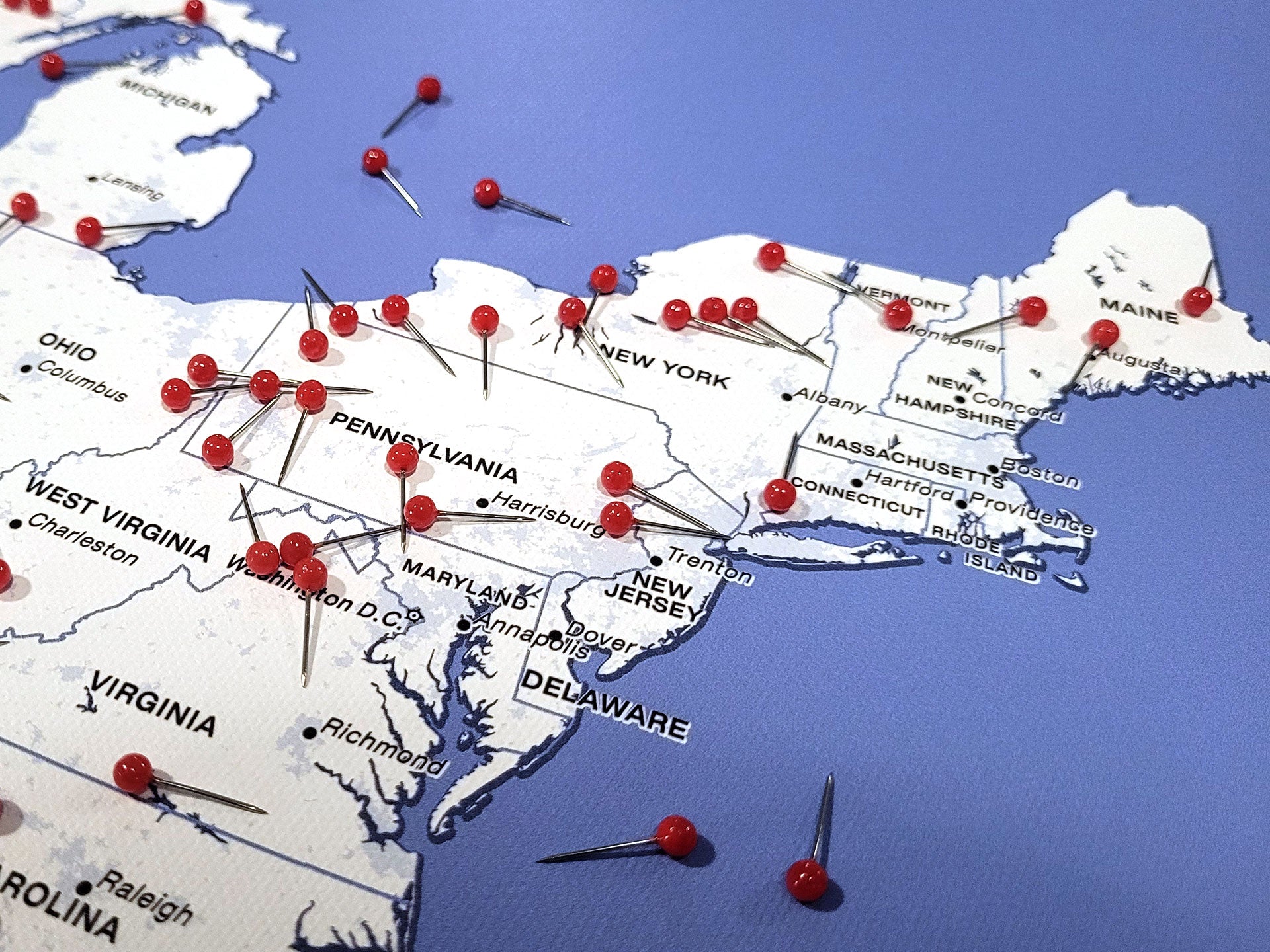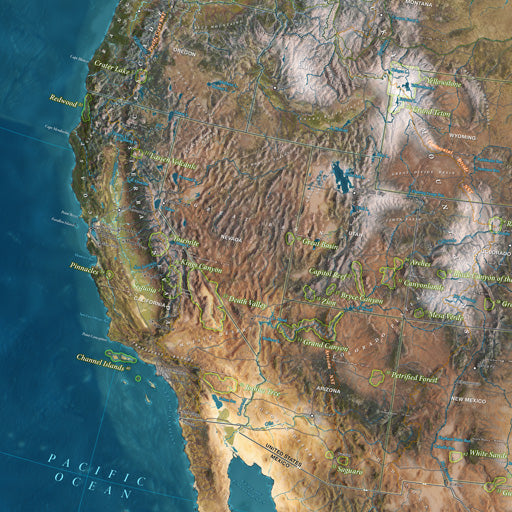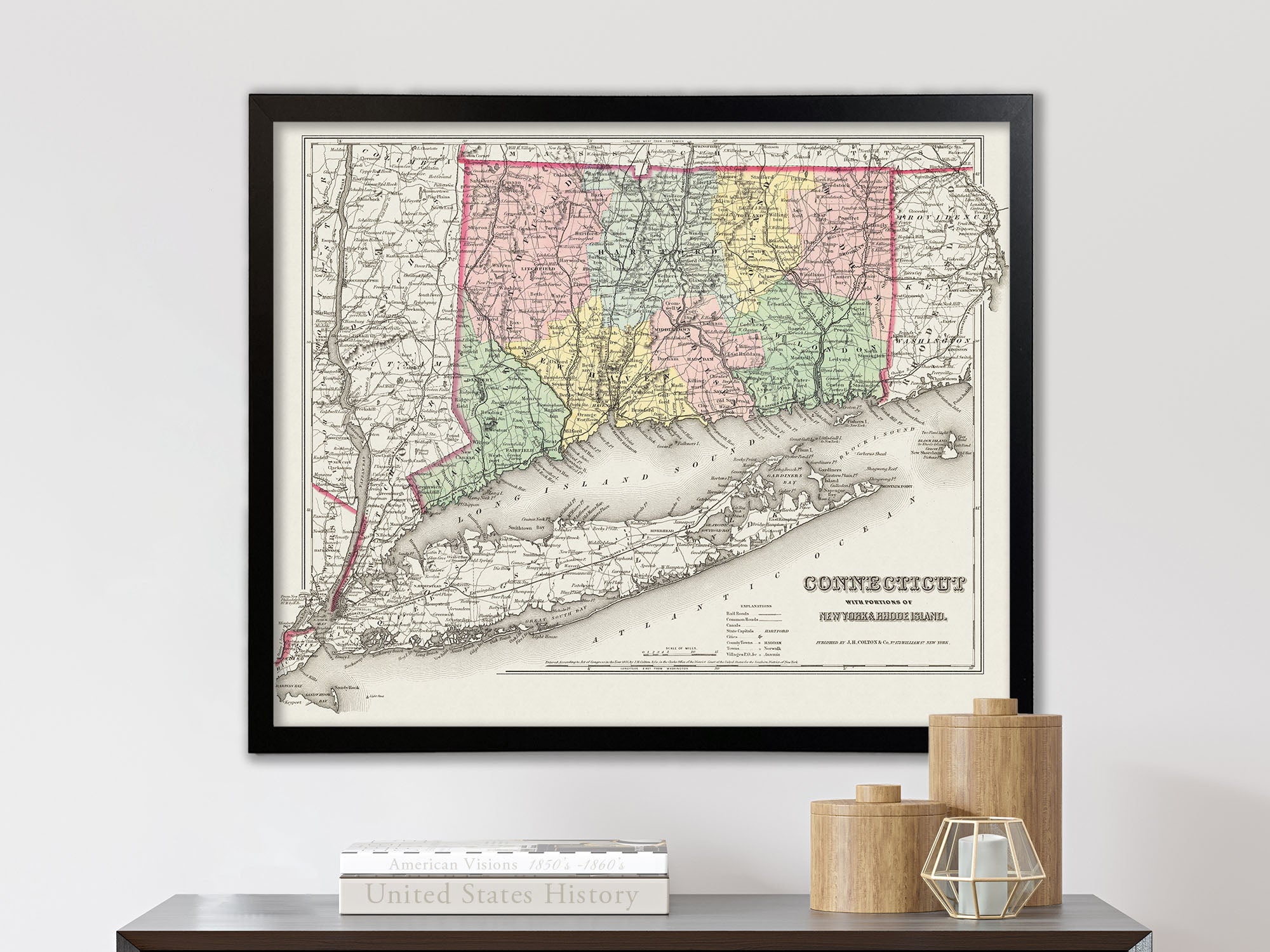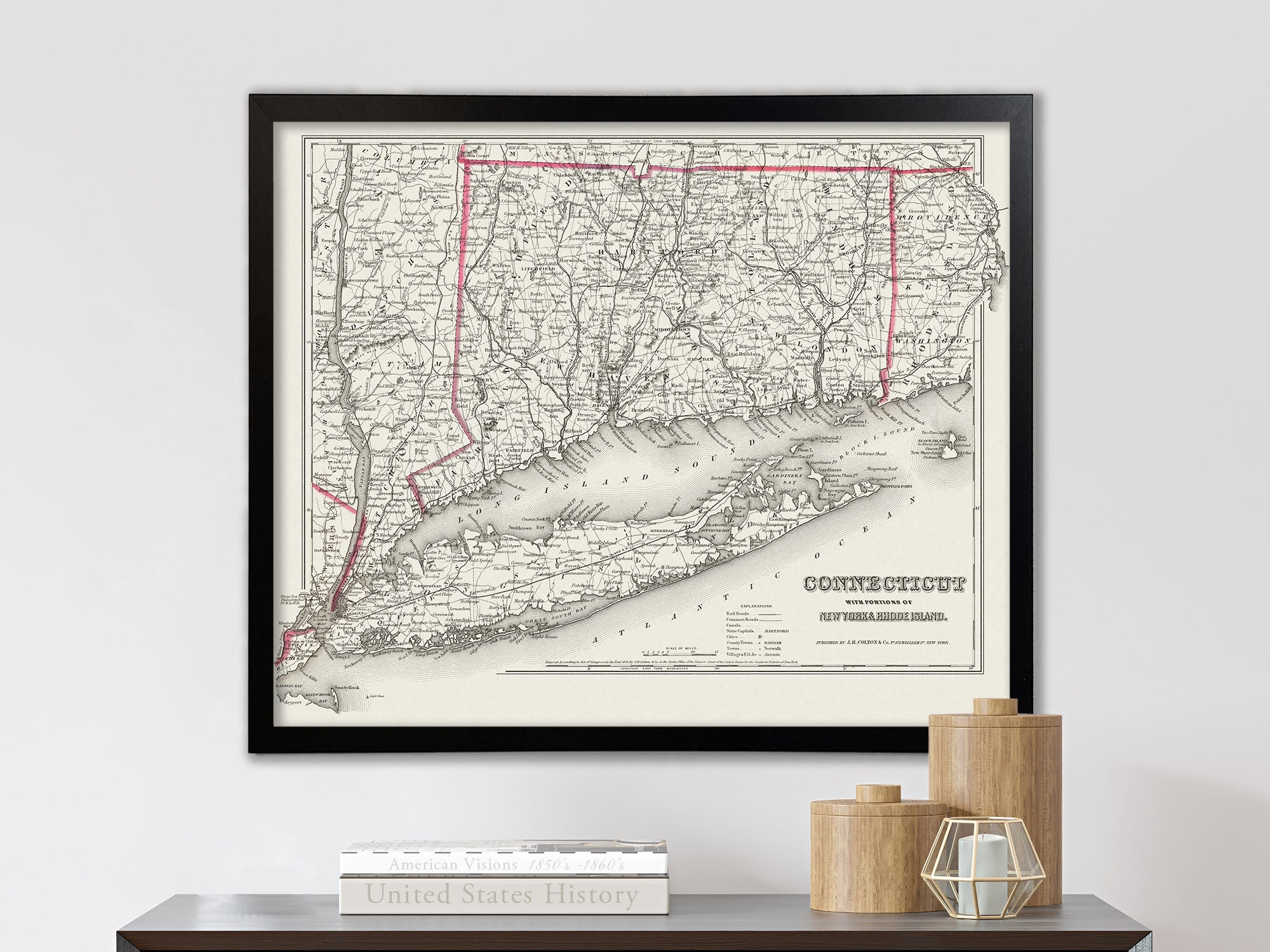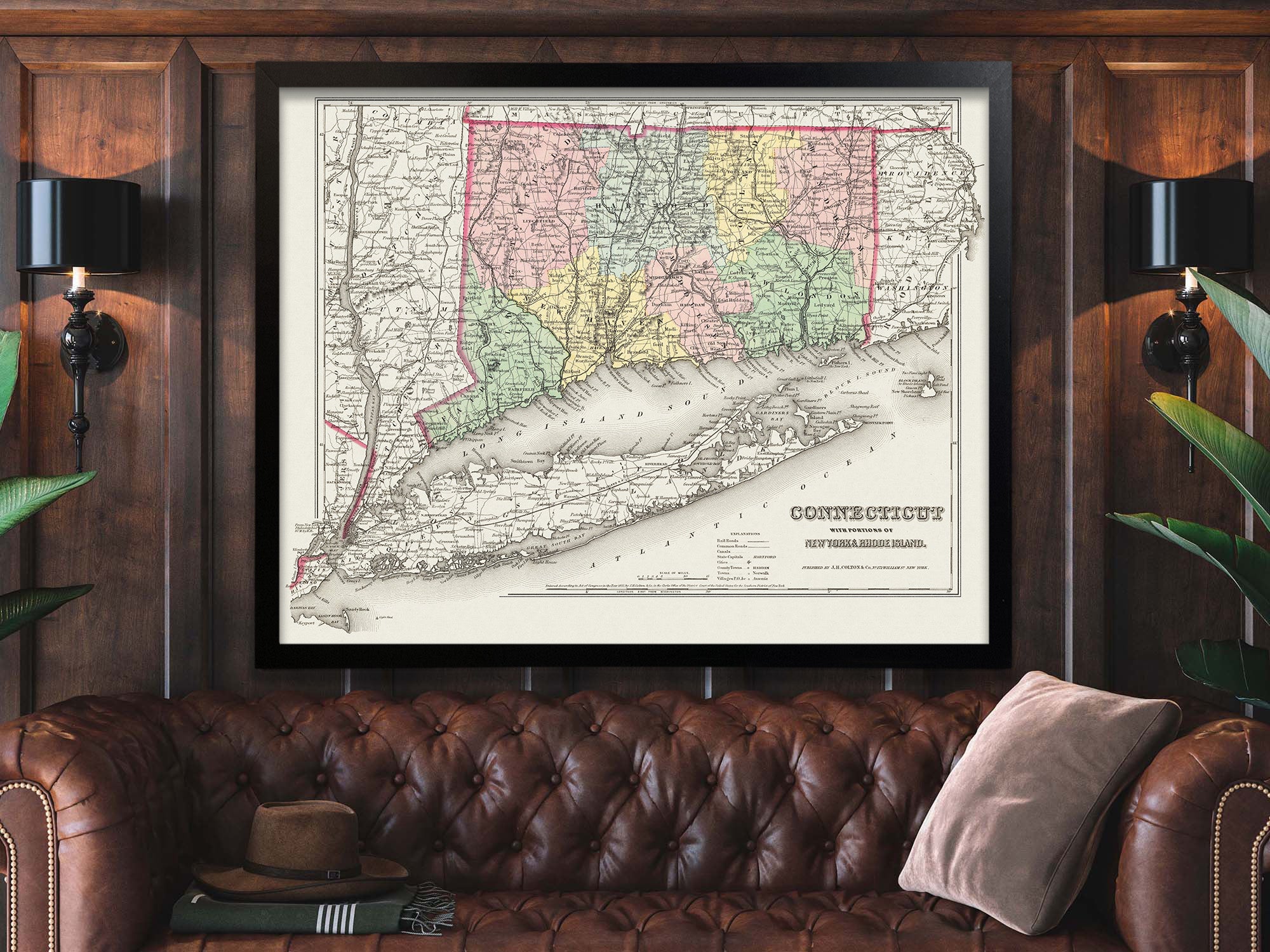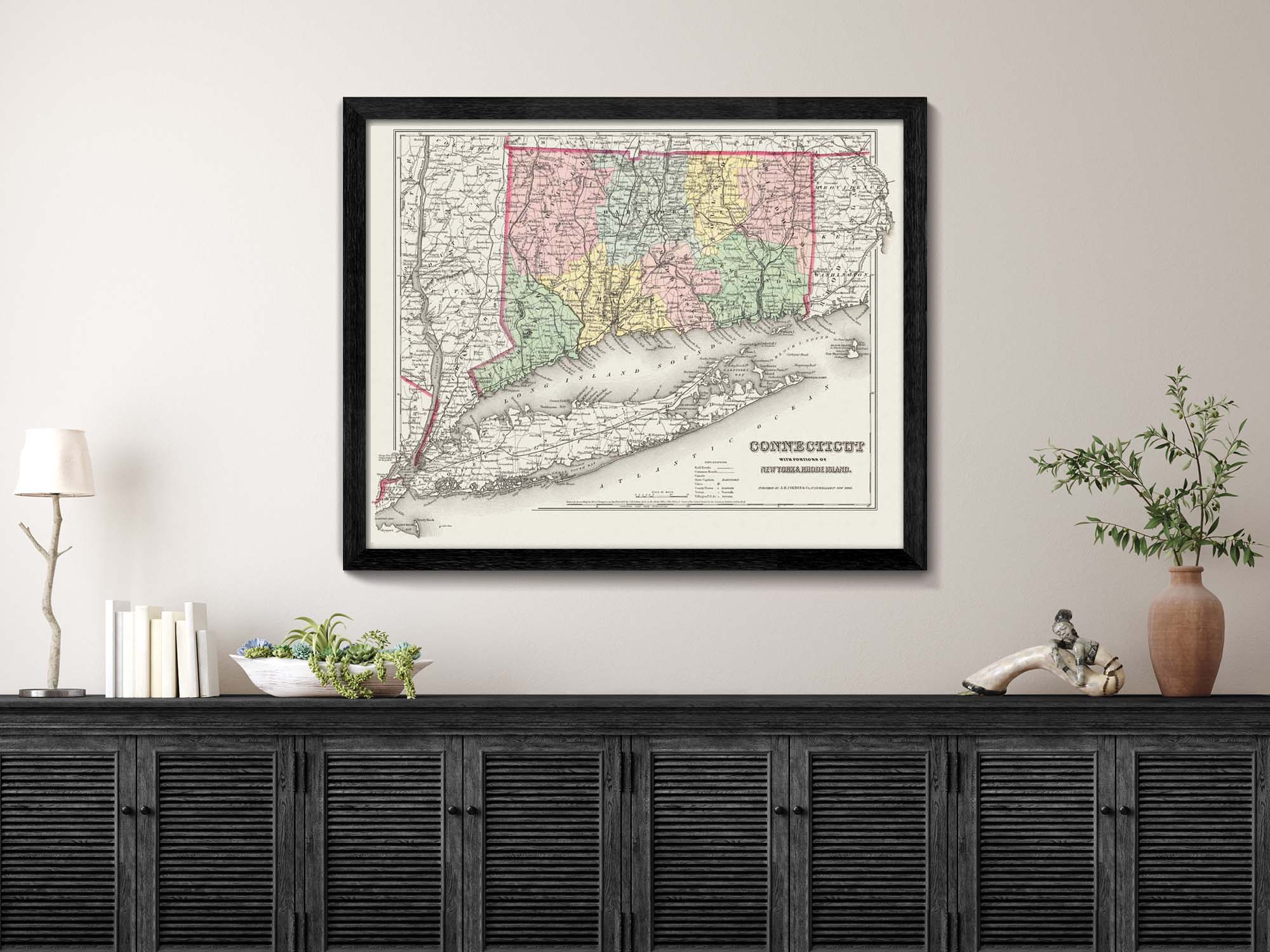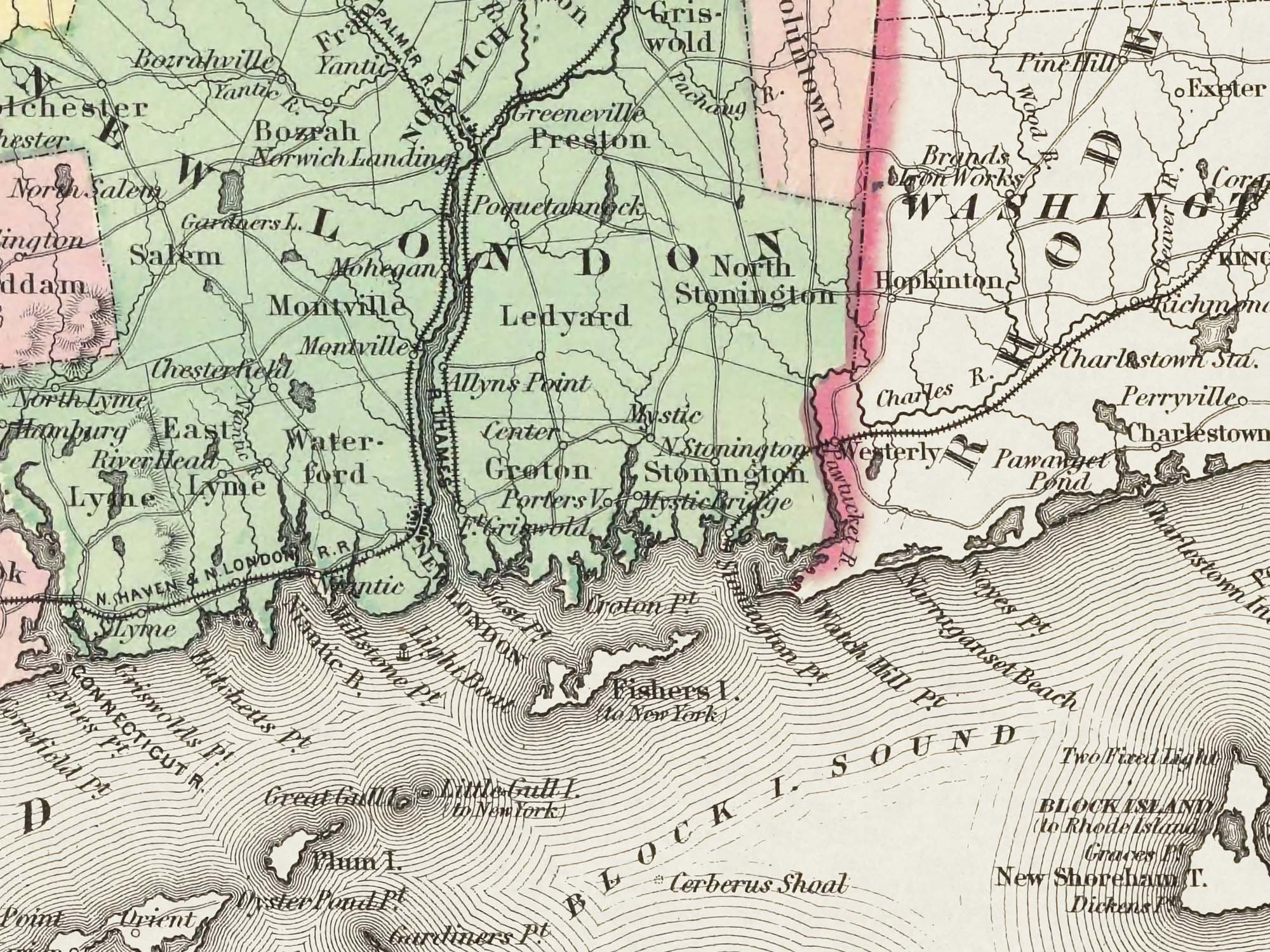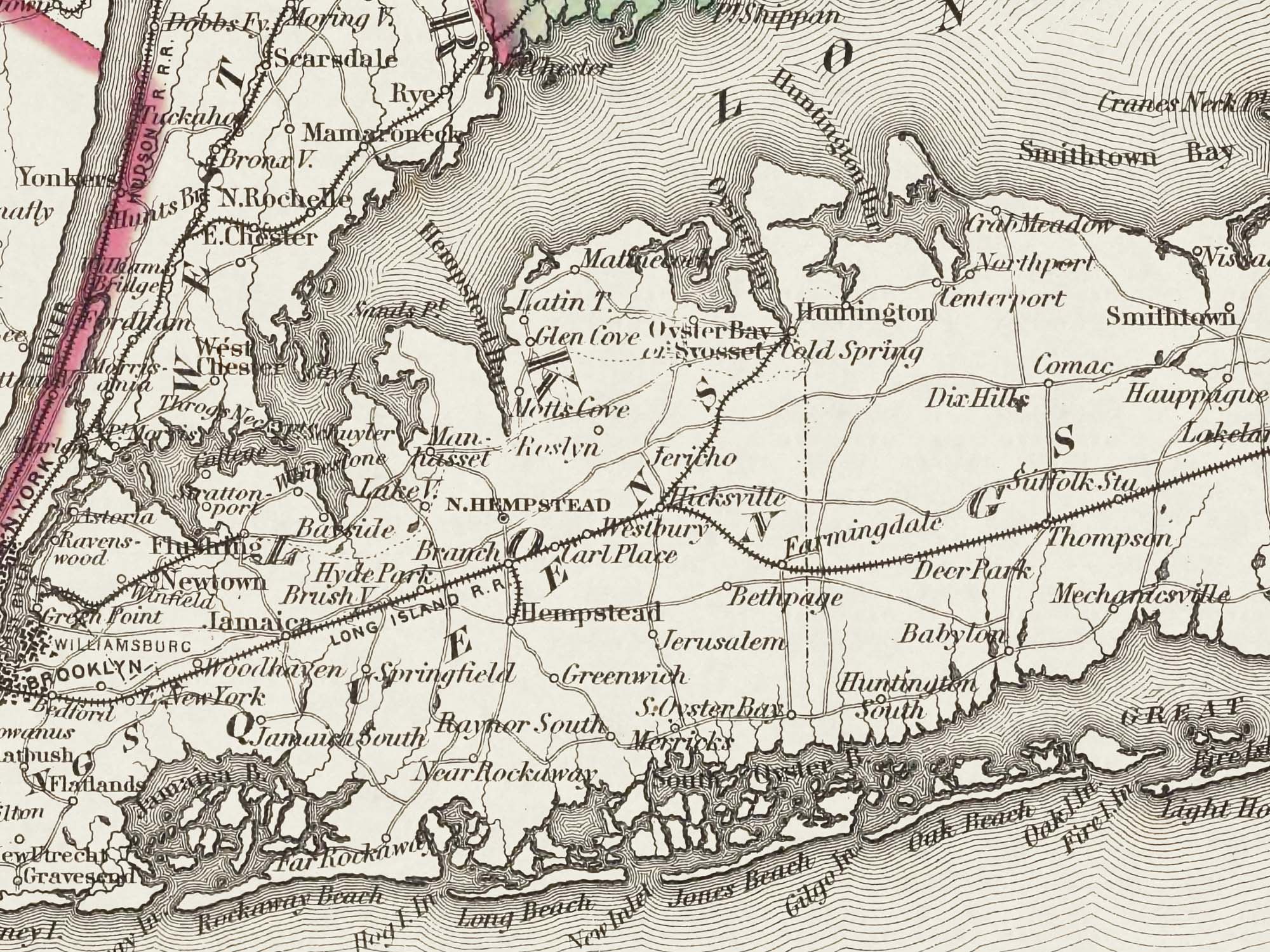This map is a faithful reproduction of the original 1850 map restored to its former glory using the latest digital imaging technology.
Vintage State Map of Connecticut
Standard maps will enter production right away, within the next business day. Larger orders may take more time.
All push pin board maps (framed or canvas wrap) include push pins, are easy to hang, and ship free in the continental US. We'll select the optimal shipping method for fast delivery.
For personalized maps we collaborate closely to guarantee satisfaction. Expect a proof to be sent to you. Your swift responses will facilitate the production and shipping process.
If there are any problems with your map we will take care of you. Returns for all maps are straightforward and hassle-free.
For personalized maps, engaging with the email proofs we send ensures that the final product meets your expectations precisely.
We have 30+ years of cartography experience, meticulously craft each order by hand to ensure excellence, and 100% guarantee your satisfaction. We produce maps that are built to last, with state of the art production and archival quality materials.
Customize with quotes, legends, or dedications using "Personalize Map" options to craft your masterpiece map. Or reach out to us if you don't see the option you want.
We collaborate with you from design to approval of your proof so that you are 100% happy before we print and ship.
Our excellent customer service is always open to you.
Restored 1850's Map
Fine Art Quality
Impressively produced with Archival Inks, Rich Color Depth, and clear and vivid labels. We use premium matte paper.
Expert Craftsmanship
We prepare the map using Fine Art Giclee production techniques. We roll the map in a sturdy tube for shipping to provide a crease-less piece of art.
Antique Connecticut Map
- Description
- Specs & Construction
About the Map: Explore the geographic history of the state of Connecticut in this historic map. This map is part of our vintage USA State Map Collection showing the geography of the states in the 1850-1860s and the time of the Civil War.
Restoration: The map is a reproduction of the original map meticulously restored to its former glory using the latest digital imaging technology. Using this technology, we carefully restored the colors, torn edges, creases, smeared writings and more. We enhanced features while keeping the original character and design of the map.
Geographic Details: This historic map shows many details of towns, roads, railroads, and waterways in the 19th century of the United States.
Shows historic cities such as Stamford, Hartford, New Haven and more!
Explore the historic boundaries of the cities, counties, and states that have changed over the years. Discover physical changes in the geography - such as former lakes and canals used for transportation and agriculture.
This map is unframed, sold as an art print. Frames are shown for illustration ONLY.
Available Sizes: For an impressive display and maximum readability, choose the largest size available.
Smaller size prints make excellent wall art in groups. Please note that there is no guarantee that small text will be legible in print.
Great Gift For: Interior Designers, Teachers, History Buffs, Anniversaries, Birthdays, Friends, Family, and many more!
Production and Shipping Times: The amount of time it takes for your map to arrive depends on where you live and how fast you approve the proof if you’ve ordered a custom map. See Production & Shipping.
Quality and Guarantee: We stand behind our work and guarantee the construction and quality. Contact us if you have any problems with your map and we will coordinate to ensure you are very happy with your purchase.
Materials and Production: This reproduction is printed on Fine Art Museum Quality Paper with giclée inks. The thick paper is archival quality and acid-free with vivid color definition. Paper details:
- 10 mil thick
- 230 gsm weight
- Museum Quality Matte finish
Made in the USA by a USA Small Business and Professional Geographer & Cartographer.
Shipped in a tube and rolled to eliminate creases.
Why choose GeoJango Maps
- We have a lifelong passion for maps, backed by 30+ years of cartography experience and Master's Degrees in Geographic Information Systems (GIS) from Penn State University and Environmental Science from the University of South Florida.
- Our incredible investment into the design of our maps results in unparalleled detail that matters: they will educate you, and grow with you as you travel the world and track your travels—where other maps miss the mark.
- We’ve built the leading map production studio in the USA and use exclusively USA-made materials. Each pin map is proudly crafted by hand, printed by us on the finest materials, mounted on museum-quality Gatorfoam, and carefully framed just for you.
History of the Time
The 1850s were a significant period in the history of Connecticut, marked by industrial growth, social changes, and the state's role in the national debates surrounding slavery and the upcoming Civil War. Situated in the heart of New England, Connecticut experienced a combination of economic expansion, cultural development, and political shifts during this decade.
The 1850s saw Connecticut firmly established as an industrial center, particularly in cities like Hartford, New Haven, and Bridgeport. The state's manufacturing prowess was fueled by its skilled workforce, abundant waterways, and a tradition of innovation. Industries such as firearms manufacturing, textile production, and clock making thrived, contributing to Connecticut's reputation as the "Arsenal of the Nation" due to its significant contribution to military production.
One of the defining social issues of the era was the abolitionist movement and the question of slavery. While Connecticut had abolished slavery in the late 18th century, the state was not immune to the debates that raged across the country in the 1850s. The Fugitive Slave Act of 1850, which required the capture and return of escaped slaves, brought the issue closer to home for many Connecticut residents. Abolitionists and anti-slavery activists like Harriet Beecher Stowe, a Connecticut resident, played a role in raising awareness and advocating for the end of slavery.
Connecticut's political landscape during the 1850s reflected the tensions surrounding slavery. The state was home to a mix of political beliefs, including those who supported the Republican Party's anti-slavery stance and those who aligned with the Democratic Party. The 1856 presidential election, which saw the rise of the Republican Party and the election of James Buchanan, highlighted the divisions that were deepening across the nation.
Cultural development was also a hallmark of Connecticut in the 1850s. Literary figures like Harriet Beecher Stowe, author of "Uncle Tom's Cabin," and Mark Twain, known for his iconic works like "The Adventures of Tom Sawyer" and "The Adventures of Huckleberry Finn," contributed to the state's intellectual and literary legacy.
Education was another area of focus, with the establishment of institutions like Wesleyan University and the continuation of Connecticut's tradition of valuing education. The state's commitment to intellectual and cultural development laid the groundwork for its future contributions to academia and the arts.
While Connecticut experienced growth and progress, the decade was not without challenges. Economic disparities and labor issues were prevalent, with workers often advocating for improved working conditions and fair wages. The Industrial Revolution's impact on society also brought challenges related to urbanization, as cities expanded and grappled with issues such as overcrowding and sanitation.
In conclusion, the 1850s were a transformative period in Connecticut's history, characterized by industrial growth, cultural development, and engagement with national debates. The state's industrial prowess, involvement in abolitionist movements, and contributions to literature and education shaped its identity and legacy during this dynamic era. As the nation moved closer to the Civil War, Connecticut's stance on slavery and its role in the broader political landscape would further solidify its position in American history.


